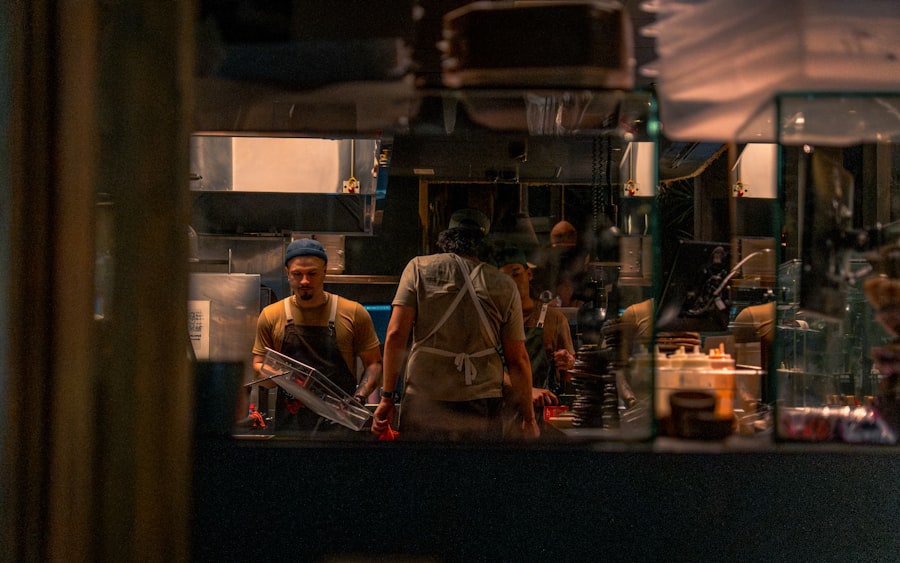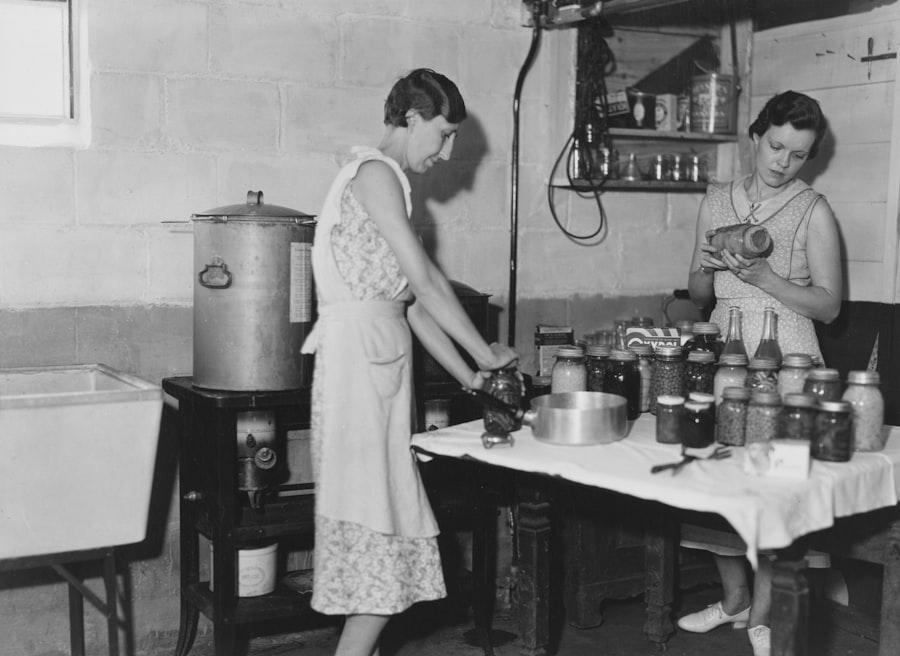The cold chain refers to a temperature-controlled supply chain that is essential for preserving the quality and safety of perishable goods, particularly food products. This system encompasses various stages, including production, processing, storage, and distribution, all of which require strict temperature management to prevent spoilage and maintain product integrity. The cold chain is vital for a wide range of products, from fresh produce and dairy items to frozen foods and pharmaceuticals.
By ensuring that these items are kept at appropriate temperatures throughout their journey from farm to table, businesses can significantly reduce waste and enhance consumer safety. In essence, the cold chain operates on the principle that temperature fluctuations can lead to microbial growth, spoilage, and loss of nutritional value. For instance, many pathogens thrive in warmer conditions, making it crucial to keep food products at safe temperatures.
The cold chain is not merely a logistical challenge; it is a critical component of public health. Understanding the intricacies of this system is essential for anyone involved in the food industry, as it lays the groundwork for effective food safety practices.
Key Takeaways
- Maintaining consistent temperature control is crucial for food safety in the cold chain.
- Proper handling, storage, and packaging prevent contamination and preserve food quality.
- Employee training and regular equipment maintenance ensure effective cold chain management.
- Traceability, documentation, and audits help identify and address potential food safety risks.
- Prompt response to incidents minimizes the impact of food safety breaches in the cold chain.
Importance of Food Safety in the Cold Chain
Food safety within the cold chain is paramount for protecting public health and ensuring consumer confidence. When food products are not stored or transported at the correct temperatures, they become susceptible to contamination and spoilage. This can lead to foodborne illnesses, which pose significant health risks to consumers and can result in costly recalls for businesses.
The importance of maintaining food safety standards cannot be overstated; it is a fundamental responsibility of all stakeholders in the supply chain. Moreover, adhering to food safety protocols within the cold chain can enhance a company’s reputation and foster customer loyalty. Consumers are increasingly aware of food safety issues and are more likely to choose brands that prioritize safe handling practices.
By investing in robust food safety measures, companies not only protect their customers but also position themselves as leaders in an increasingly competitive market. The implications of neglecting food safety can be severe, ranging from legal repercussions to long-term damage to a brand’s image.
Implementing Proper Handling and Storage Practices

Proper handling and storage practices are critical components of an effective cold chain. These practices begin with the initial receipt of products, where employees must ensure that items are stored promptly in appropriate temperature-controlled environments. It is essential to train staff on the importance of maintaining the cold chain from the moment products arrive at a facility until they reach the end consumer.
This includes understanding how to handle different types of products, as various items may have specific temperature requirements. In addition to proper handling upon receipt, ongoing storage practices must be monitored closely. This involves regularly checking temperatures in refrigerators and freezers, ensuring that equipment is functioning correctly, and organizing products in a way that allows for proper air circulation.
Implementing a first-in, first-out (FIFO) system can also help minimize waste by ensuring that older products are used before newer ones. By establishing these practices, businesses can significantly reduce the risk of spoilage and maintain the quality of their products throughout the supply chain.
Monitoring and Controlling Temperature
| Metric | Description | Unit | Typical Range | Measurement Frequency |
|---|---|---|---|---|
| Current Temperature | Real-time temperature reading of the monitored environment | °C / °F | -40 to 150 °C | Every 1 second to 1 minute |
| Setpoint Temperature | Desired target temperature to maintain | °C / °F | Varies by application | As configured |
| Temperature Deviation | Difference between current temperature and setpoint | °C / °F | ±0 to ±10 °C | Every measurement |
| Rate of Temperature Change | Speed at which temperature is increasing or decreasing | °C/min or °F/min | -5 to +5 °C/min | Every 1 to 5 minutes |
| Control Output | Signal sent to heating/cooling device to adjust temperature | Percentage (%) or Voltage (V) | 0% to 100% | Continuous |
| Alarm Status | Indicates if temperature is outside safe limits | Boolean (On/Off) | On / Off | Continuous |
| Sensor Accuracy | Precision of the temperature sensor | ± °C / °F | ±0.1 to ±1.0 °C | Static |
Monitoring and controlling temperature is a cornerstone of effective cold chain management. Temperature fluctuations can occur due to equipment malfunctions, power outages, or human error, making it essential to have systems in place that provide real-time data on temperature conditions. Many companies now utilize advanced technology such as IoT devices and temperature monitoring systems that send alerts when temperatures deviate from acceptable ranges.
This proactive approach allows businesses to address potential issues before they escalate into significant problems. In addition to real-time monitoring, regular audits of temperature control systems are necessary to ensure compliance with safety standards. These audits should include checks on refrigeration units, transportation vehicles, and storage facilities.
By conducting thorough inspections and maintaining detailed records of temperature readings, companies can demonstrate their commitment to food safety and compliance with regulatory requirements. Ultimately, effective temperature control not only protects consumers but also enhances operational efficiency by reducing waste and spoilage.
Preventing Cross-Contamination in the Cold Chain
Preventing cross-contamination is another critical aspect of maintaining food safety within the cold chain. Cross-contamination occurs when harmful bacteria or allergens are transferred from one product to another, often due to improper handling or storage practices. This risk is particularly pronounced in environments where raw and cooked foods are stored together or where different types of products share storage space.
To mitigate this risk, businesses must implement strict protocols that separate different categories of food items. One effective strategy for preventing cross-contamination is to designate specific areas for different types of products within storage facilities.
Additionally, employees should be trained on proper hygiene practices, such as handwashing and using separate utensils for different food types. By fostering a culture of food safety awareness among staff and implementing clear guidelines for handling products, businesses can significantly reduce the likelihood of cross-contamination incidents.
Training and Educating Employees

Training and educating employees about cold chain management is essential for ensuring compliance with food safety standards. Employees are often the first line of defense against potential hazards in the supply chain; therefore, equipping them with the knowledge and skills necessary to handle perishable goods safely is crucial. Comprehensive training programs should cover topics such as proper storage techniques, temperature monitoring procedures, and hygiene practices.
Regular refresher courses can also help reinforce best practices and keep employees informed about any changes in regulations or company policies. Engaging employees through interactive training sessions or workshops can enhance their understanding and retention of critical information. By investing in employee education, businesses not only improve their overall food safety performance but also empower their workforce to take ownership of their roles in maintaining the integrity of the cold chain.
Utilizing Proper Packaging and Insulation
Proper packaging and insulation play a vital role in maintaining temperature control throughout the cold chain. The right packaging materials can help protect products from temperature fluctuations during transportation and storage while also preventing physical damage. For instance, insulated containers or thermal blankets can be used to maintain consistent temperatures for sensitive items during transit.
Additionally, using packaging designed specifically for perishable goods can help extend shelf life by minimizing exposure to air and moisture. Moreover, businesses should consider the environmental impact of their packaging choices. Sustainable packaging solutions not only appeal to environmentally conscious consumers but can also enhance a company’s brand image.
Regular Maintenance of Cold Chain Equipment
Regular maintenance of cold chain equipment is essential for ensuring optimal performance and preventing equipment failures that could compromise food safety. Refrigerators, freezers, and transportation vehicles must be routinely inspected and serviced to ensure they are functioning correctly. This includes checking seals on doors, cleaning condenser coils, and calibrating temperature controls as needed.
A proactive maintenance schedule can help identify potential issues before they lead to costly breakdowns or product spoilage. In addition to routine maintenance, businesses should keep detailed records of all inspections and repairs performed on cold chain equipment. This documentation not only helps track equipment performance over time but also serves as evidence of compliance with food safety regulations during audits or inspections.
By prioritizing regular maintenance, companies can enhance the reliability of their cold chain operations and safeguard the quality of their products.
Implementing Traceability and Documentation
Implementing traceability and documentation systems within the cold chain is crucial for ensuring accountability and transparency throughout the supply chain. Traceability allows businesses to track products from their origin through every stage of processing, storage, and distribution. In the event of a food safety incident or recall, having robust traceability systems in place enables companies to quickly identify affected products and take appropriate action.
Documentation plays a key role in supporting traceability efforts by providing a comprehensive record of each product’s journey through the cold chain. This includes details such as temperature logs, handling procedures, and transportation records. By maintaining accurate documentation, businesses can demonstrate compliance with regulatory requirements while also building trust with consumers who increasingly demand transparency regarding the origins and handling of their food.
Conducting Regular Audits and Inspections
Conducting regular audits and inspections is an integral part of maintaining food safety within the cold chain. These evaluations help identify potential weaknesses in processes or equipment that could compromise product integrity. Audits should encompass all aspects of the cold chain, including storage facilities, transportation methods, and employee practices.
By systematically reviewing operations against established standards, businesses can pinpoint areas for improvement and implement corrective actions as needed. In addition to internal audits, companies may also benefit from third-party inspections conducted by external organizations specializing in food safety compliance. These independent evaluations provide an objective assessment of a company’s practices and can help identify blind spots that internal teams may overlook.
Regular audits not only enhance food safety but also foster a culture of continuous improvement within organizations committed to excellence in cold chain management.
Responding to Food Safety Incidents in the Cold Chain
Despite best efforts to maintain food safety within the cold chain, incidents may still occur that require prompt action. Having a well-defined response plan in place is essential for minimizing risks associated with foodborne illnesses or product recalls. This plan should outline clear procedures for identifying affected products, notifying relevant stakeholders, and communicating with consumers about potential risks.
Effective communication is critical during a food safety incident; businesses must be transparent about what occurred while providing guidance on how consumers should respond if they have purchased affected products. Additionally, conducting a thorough investigation following an incident can help identify root causes and prevent similar occurrences in the future. By being prepared to respond swiftly and effectively to food safety incidents, companies can protect public health while safeguarding their reputation in an increasingly vigilant marketplace.
In conclusion, managing the cold chain effectively requires a multifaceted approach that encompasses understanding its principles, implementing best practices for handling and storage, monitoring temperatures diligently, preventing cross-contamination, training employees thoroughly, utilizing proper packaging solutions, maintaining equipment regularly, ensuring traceability through documentation, conducting audits consistently, and being prepared for incidents when they arise. By prioritizing these elements within their operations, businesses can enhance food safety while fostering consumer trust in their products.
Ensuring food safety in the cold chain is crucial for preventing foodborne illnesses and maintaining product quality. A related article that delves into the importance of temperature control and monitoring in the cold chain can be found at Hey Did You Know This. This resource provides valuable insights into best practices for managing cold storage and transportation, highlighting the significance of maintaining appropriate temperatures throughout the supply chain.
WATCH THIS! The 100-Year Lie That Built Your Grocery Store — The Hidden Truth About “Fresh” Produce
FAQs
What is the cold chain in food safety?
The cold chain refers to the temperature-controlled supply chain that ensures perishable food products are kept at safe temperatures from production through transportation, storage, and distribution until they reach the consumer. Maintaining the cold chain helps prevent spoilage and the growth of harmful bacteria.
Why is maintaining the cold chain important for food safety?
Maintaining the cold chain is crucial because it slows down the growth of pathogens and spoilage microorganisms in perishable foods such as meat, dairy, seafood, and fresh produce. Breaking the cold chain can lead to foodborne illnesses and reduce the shelf life of products.
What temperature ranges are typically used in the cold chain?
The temperature ranges vary depending on the type of food but generally include refrigeration temperatures between 0°C and 4°C (32°F to 39°F) and freezing temperatures below -18°C (0°F). These temperatures help preserve food quality and safety.
What are common challenges in maintaining the cold chain?
Common challenges include temperature fluctuations during transportation, inadequate refrigeration equipment, delays in transit, improper handling, and lack of monitoring systems. These issues can compromise food safety and quality.
How is temperature monitored in the cold chain?
Temperature is monitored using devices such as data loggers, temperature indicators, and sensors that record and sometimes transmit temperature data in real-time. This monitoring helps ensure that food remains within safe temperature limits throughout the supply chain.
What types of foods require strict cold chain management?
Foods that require strict cold chain management include fresh and frozen meat, seafood, dairy products, fruits and vegetables, ready-to-eat meals, and pharmaceuticals. These items are highly perishable and sensitive to temperature changes.
What are the consequences of breaking the cold chain?
Breaking the cold chain can lead to microbial growth, food spoilage, loss of nutritional value, and increased risk of foodborne illnesses. It can also result in economic losses due to product recalls and waste.
How can consumers ensure food safety related to the cold chain?
Consumers can ensure food safety by promptly refrigerating or freezing perishable foods after purchase, checking expiration dates, avoiding temperature abuse during transport, and following proper storage guidelines at home.
Are there regulations governing the cold chain?
Yes, many countries have regulations and guidelines that govern cold chain management to ensure food safety. These include standards for temperature control, transportation, storage, and documentation to comply with food safety laws.
What technologies are used to improve cold chain food safety?
Technologies such as IoT sensors, blockchain for traceability, advanced refrigeration systems, and real-time temperature monitoring devices are increasingly used to enhance cold chain management and ensure food safety.
